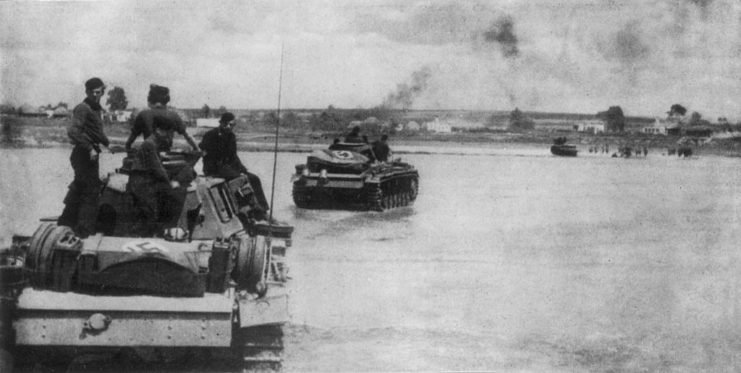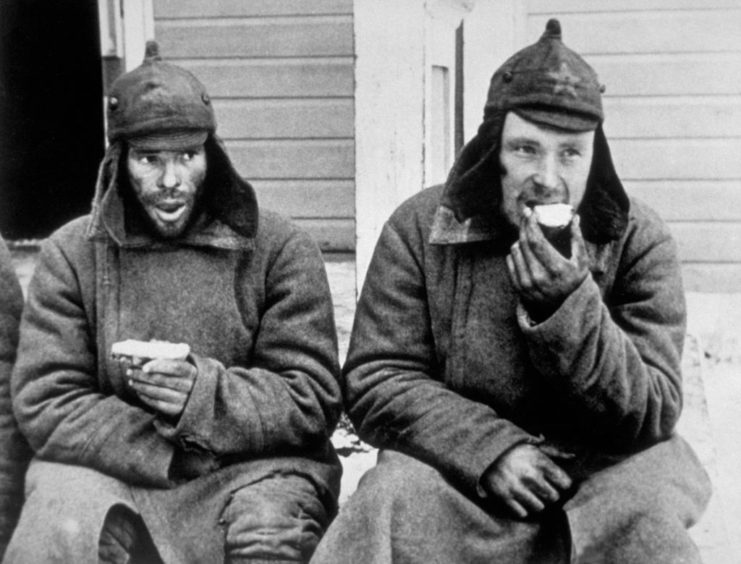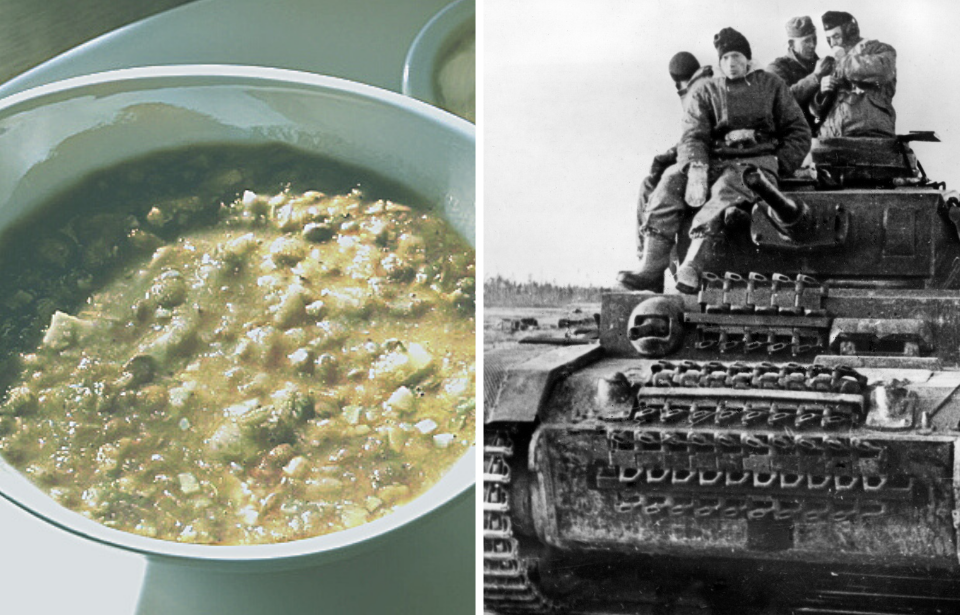It has been said that the hardest military maneuverer is a retreat. Usually, the defeated force is in poor shape (hence the retreat), has lost control of the battle, and is pursued relentlessly by the enemy. If a commander wins many battles they may be considered great, but their ability at handling a retreat is what can be the defining factor of a truly excellent commander. These desperate times call for desperate and unorthodox measures, which German forces used to great effect in Russia while making a hasty retreat.
2nd Battalion

In November 1942 during the Battle of Stalingrad, the German 2nd Battalion from the 132nd Infantry Regiment was part of the German attempt to stop the rapid Soviet encirclement of the city, which was coming from both north and south.
Located on the west banks of the Don River, the troops had set up defensive positions. In mid-November, they were instructed to move toward the village of Verkhne-Buzinovka, which was 25 miles away. When they arrived the next day they immediately came under fire from Soviet forces to the north and northwest. After repelling these assaults, the 1st and 2nd Battalions launched an assault that resulted in the capture of 80 Soviet troops and two miles of ground, forcing the rest of the local Soviet forces to retreat.
However, the next day the German troops noticed a huge column of Soviet infantry, cavalry, and artillery approaching their position. Realizing they were hopelessly outnumbered, they made a desperate rush back to the edge of the village facing the Soviet approach to create a defensive line. Officers were assigned specific sections of the line to manage. The Germans didn’t even have enough time to organize their units, so men were mixed and matched with different officers and units.
The men waited until the Soviet column reached about 1,500 meters from the village and opened fire with everything they had. Artillery, machine guns, mortars, and rifles lit up the road, stunning the Soviet troops and sending them into disarray.
The Germans managed to delay the advance and used the time to reorganize, solidify defenses, and resupply.
The Soviets also regrouped and reorganized, and then threw an all-out assault on the village, covered by artillery fire. The German commander knew Verkhne-Buzinovka could not be held against the overwhelming Soviet forces and that he must mount a retreat. But it was only mid-afternoon and the retreat route ran through miles of open countryside which would have left the troops dangerously exposed to Soviet fire. The Germans would have to wait until darkness fell before making their move.
Their defense continued throughout the day, as preparations were made for a hasty retreat.
Part of these preparations included a clever idea conjured by the German commander to use the Soviets’ own hunger as a tool in the retreat.
Lentil soup

Soviet troops were notoriously underfed during the war which made them desperate for food. With this in mind, the German commander ordered his cooks to make a large batch of lentil and pea soup from a stockpile of legumes they found in a building in the village. In front of the first buildings the advancing Soviets would reach, the Germans lit fires. The ingredients for the soup were mixed into large pots filled with water and positioned over the fires.
In addition to this, the troops emptied the contents of German mail sacks onto the streets.
By nightfall, the German troops were on the brink of being overrun, so the commander gave the order to retreat.
The troops progressively left the village, covering one another while they did so. Their heavy artillery guns fired into the Soviets at point-blank range in a bid to help the retreat, before finally retreating themselves. The Soviets were hot on their heels at first, but once they reached the steaming pots of soup the scent was simply too much to resist. The hungry Soviet troops clambered over each other to grab some of the soup, inadvertently giving the Germans more time.
The ruse had worked; the German troops were able to successfully withdraw from Verkhne-Buzinovka while the Soviets were busy eating.
Unfortunately for the men of the 2nd Battalion, any excitement over the successful retreat was quelled when they received the news that the Sixth Army had been encircled in Stalingrad.
